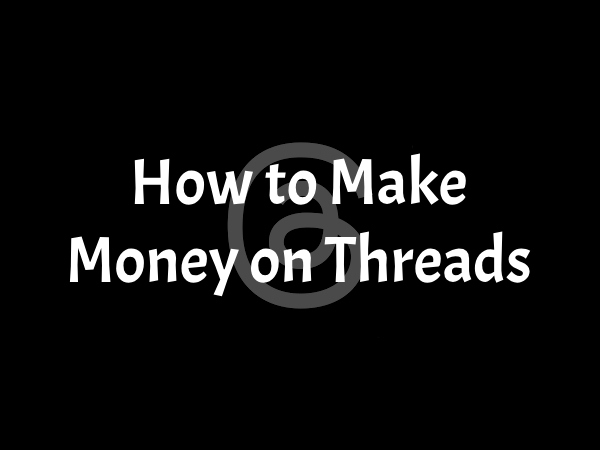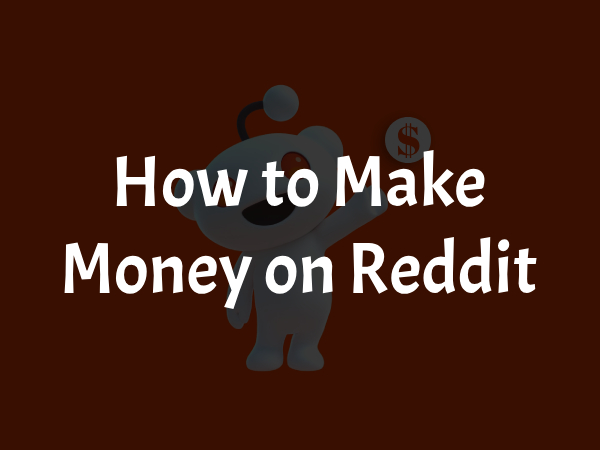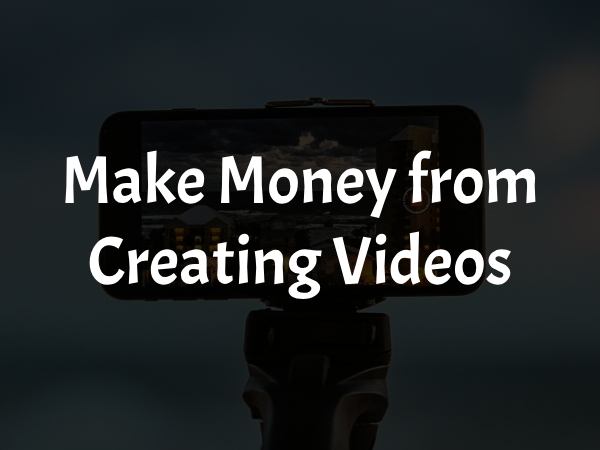5 Ways to Make Money from Design 2025
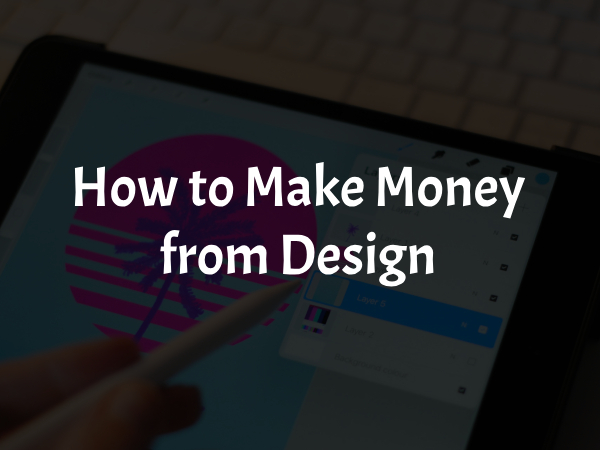
Design, in all its forms, is considered one of the most popular fields for making money online, especially in 2025 and beyond.
It stands out as a field that can generate good income, particularly if it’s something you’re passionate about or enjoy doing.
In this guide, we’ll discuss several key aspects of design, including its meaning, elements, and principles. Since design is a broad field, we’ll focus mainly on graphic design—creating designs using your digital device—and how to earn money from it. We’ll also explore the tools you need to get started, where and how you can work, the pros and cons of the field, and much more.
While web design is one branch of design, we won’t go into detail here. If you’re interested in that area, feel free to check out our article on programming and development and how to profit from it.
What is design, and what do you need to get started?
What is design?
Design is the realization of a concept, idea, or theory through drawings, models, plans, specifications, etc., ultimately helping the designer achieve a specific goal.
It is both an art and a process of planning and creating detailed visual representations of something. That said, design can be defined in many different ways.
Design is a plan for arranging elements in such a way as best to accomplish a particular purpose.”
― Charles Eames, American designer, architect, and filmmaker
What is Graphic Design?
Graphic design is the process of creating visual content to communicate messages or information to an audience.
It is a subset of communication design and involves crafting visual materials using elements like photography, color, typography, illustrations, and icons. Examples include billboards, logos, product packaging, and more.
A designer is someone who conceptualizes, plans, structures, and creates the design.
Elements of design
The elements that come together to form a design include:
- Line: A mark connecting two points.
- Shape: Can be geometric (e.g., squares, circles) or organic (free-form, natural shapes with no defined geometry).
- Direction: Horizontal, vertical, or diagonal orientation.
- Size: The dimensions of an element in relation to others.
- Texture: The surface quality, does it appear rough, smooth, etc.?
- Color: Includes hue, value (lightness or darkness), and intensity (brightness or dullness).
Principles of design
Design principles are fundamental ideas and rules that guide the creation of successful designs.
A design process should balance various, often conflicting, requirements such as aesthetics, brief objectives, budget, structure, organization, climate, weather, security, privacy, and more to create a unified and functional result.
This can be achieved through key principles of design such as balance, unity, movement, emphasis, contrast, space, alignment, etc.
What do you need to work as a designer (+ tools)?

You might be thinking about—or already interested in—getting into the design field to start working and earning money. If that’s the case, there are a few things you need to have as well as a few things you need to acquire or gain access to.
We’re not trying to scare you by saying you’ll need certain tools or resources; chances are, you already have some of them, or they’re easy to get. And yes, sometimes you might need to spend a bit of money to get started.
If we asked, “What do I need to create a design?”
The answer would be, “I need an electronic device and software to design with.”
So now we have a basic idea of what’s required. But before jumping into the technical side, there’s something even more important:
A Passion for Design
Before you begin, you need to genuinely enjoy this field. If design is something you love or consider a hobby, then chances are you won’t get bored with it; you’ll keep going even if you don’t achieve your dream results right away.
It might take a few days or weeks to start earning money in this field. Are you willing to stay patient during that time to reach your goal?
You might be okay waiting a few weeks, but what if it takes months or even over a year to reach your desired income? Once you start earning a decent or even great income, will you still be motivated to keep going for years?
Only those who truly love design and creativity can begin this journey and stick with it without thinking of quitting. Why? Because people naturally enjoy doing the things they love, even if they have to do them for a long time.
If you have a passion for this field, you’ll likely keep going and maybe even become great at it. But if the passion isn’t there, you may lose motivation or give up altogether.
Language Skills (If you are not an English speaker)
In most cases, you’ll need to deal with the English language whether it’s for work, researching ideas, communicating with platform support, managing your accounts, or talking with clients. So, you’ll need at least a basic understanding of English, or better yet, try to improve your skills over time.
Speaking from personal experience:
I worked for years as a designer using one of the methods mentioned below. I created thousands of designs, received hundreds of sales, registered on various platforms, contacted customer support, communicated with clients, researched ideas, and more.
English is very important in this field.
If English is your native language, forget this part.
Computer or Laptop
How will you design without an electronic device?
Sure, it’s possible to design using a smartphone or tablet, but a computer (laptop or desktop) remains the best option for this field. It offers numerous advantages, such as:
- Sufficient storage space
- More powerful processing capabilities
- The ability to install multiple design programs and graphic resources
- A full-sized keyboard, and more
You can choose between a desktop or a laptop, as long as it meets the requirements for your design tasks. Some computers simply can’t handle multiple software programs or store large files like high-resolution images and vector files. That’s why it’s important to invest in a device that can handle your workflow.
For example, when I first started, I bought a used laptop for around $200, and it was more than enough for my needs. So if you can’t afford a brand-new one, consider searching for a reliable second-hand device.
If you already have a computer that can run your design programs smoothly, that’s perfect!
If you’re planning to buy a new one and you’re not sure what specs to look for, it’s a good idea to take someone with tech knowledge along to help you make a smart choice.
Design Software
You’ll need to download design software to create and work on your projects.
There are many options to choose from, both paid and free. Some of the most popular programs include:
- Illustrator
- Photoshop
- InDesign
These are all developed by Adobe, a well-known company in the design software industry.
Depending on your style or goals, you might prefer one program over another or even use several together.
Graphic Resource Platforms
Often, you’ll need external resources to enhance your designs or to edit and build upon them. There are many platforms and websites that offer these resources.
Since free design assets often come with limitations, you might need to subscribe to a platform that provides access to vectors, stock photos, icons, and other materials (usually on a monthly or yearly basis).
Other Helpful Tools (Optional)
You might also find some physical tools helpful, such as:
- A ruler
- A sketchbook
- Drawing pencils
These aren’t mandatory, but they can come in handy for brainstorming ideas or sketching out initial concepts by hand.
Design fields
Design can be divided into various types and fields depending on its purpose and the industry it serves. These fields exist to fulfill different goals and meet the needs of diverse sectors.
Here’s a brief overview of some of the most common design specializations (categorized by designer type):
- Graphic Designer
- Information Designer
- Interior Designer
- Experiential Designer
- Multimedia Artist & Animator
- Photographer
- Interaction Designer (IxD)
- User Experience (UX) Designer
- User Interface (UI) Designer
- Web Designer
- Fashion Designer
- Film & Video Editor
- Book and Print Designer
- Visual Identity Designer
- Packaging Designer
- Art & Illustration
- …and many more.
Related: How to Make Money from Creating Videos.
Where can you work as a designer?
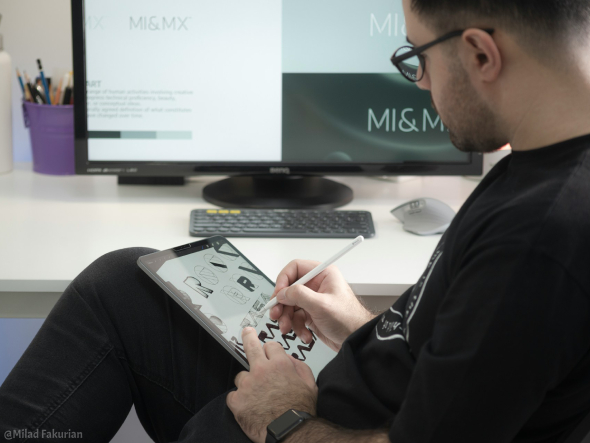
There are several platforms where you can work as a designer and start earning an income. These include freelance service websites, social media apps, design marketplaces, and more.
Here are some of the most popular options:
1. Freelance and job platforms
Fiverr
Fiverr is a platform for selling freelance services (often referred to as “gigs”). You simply choose something you’re good at and offer it as a service. Clients who are interested in your service will pay the price you set, and you’ll complete the task they request.
While browsing Fiverr, you’ll find dozens of design-related services that you can offer, like logo design, business cards, posters, websites, and more.
Personally, I used to think Fiverr was a platform only for design services until I realized it hosts a wide range of offerings across many fields.
You can sign up, create your own space on the platform, and list services that suit your skills.
Upwork
Upwork is a freelance platform that connects clients and businesses with independent professionals (freelancers). As a freelancer, you create a profile showcasing your skills, services, and past work.
On the other side, clients or companies post job listings describing what they need. Your job is to apply for those listings, pitch your services, and complete the tasks once hired.
Upwork offers hundreds of job opportunities in a wide range of categories, including:
- Web and mobile development
- Graphic design and creative services
- Administrative support
- IT and networking
- Writing and translation
- Customer service
- Sales and marketing
- …and more.
Related: How to Make Money on Upwork.
FlexJobs
FlexJobs is one of the most well-known job search platforms for remote and flexible job opportunities.
As stated by the platform itself:
Our team works incredibly hard to provide the best job search service and resources for people looking for remote and flexible opportunities. We’ve helped over 11.4 million job seekers connect with over 57,000 jobs listed in more than 50 different job categories in our database with over 60,000 employers.
FlexJobs is a great option if you’re looking for remote work, especially long-term or part-time jobs in fields like design, writing, marketing, and many others.
Freelancer
Freelancer.com is one of the largest and most well-known freelance marketplaces.
As they describe themselves:
Freelancer.com is the world’s largest freelancing and crowdsourcing marketplace by number of users and projects. We connect over 80,222,572 employers and freelancers globally from over 247 countries, regions and territories. Through our marketplace, employers can hire freelancers to do work in areas such as software development, writing, data entry and design right through to engineering, the sciences, sales and marketing, accounting and legal services.
This platform offers a wide variety of jobs across many fields, making it a great place for designers to find paid work.
Behance
Behance is the go-to platform for creatives looking to showcase their portfolios and get discovered by potential clients.
It features a vast collection of high-quality creative work, including illustrations, animations, web design, mobile app development, and more.
When you upload your projects to your Behance profile, your work becomes visible to a global audience of like-minded creatives. If your project gets selected as a featured project, it can significantly boost your visibility. Who knows who might see it and offer you a job!
Behance also functions as a social network for creatives, helping you connect with other designers and expand your professional network, which could lead to more opportunities.
Additionally, Behance has a Job Board with curated listings for quality freelance and full-time design jobs. While you won’t find thousands of listings, the opportunities posted are often high-quality and well-matched to the platform’s reputation.
Dribbble
Dribbble is one of the most popular and widely used platforms for freelance designers across various specialties.
If you’re looking for freelance design jobs—ranging from graphic design to product design and everything in between—Dribbble is the place to be. Setting up a professional profile here is essential if you want to get noticed.
The platform receives a huge volume of traffic from clients actively seeking talented designers.
Other Notable Platforms
There are also other platforms offering similar services and opportunities for designers, such as:
- 99designs: A marketplace specifically focused on design competitions and freelance work.
- Guru: Another freelance platform with a wide range of creative job listings.
2. Social media platforms
In addition to freelance job sites, social media platforms can also be powerful tools for finding work, promoting your services, and connecting with potential clients. Here are some platforms you can leverage as a designer:
LinkedIn is a professional networking platform that also serves as a powerful job-hunting tool. You can create a detailed profile highlighting your skills, qualifications, and experience.
Personally, I’ve received notifications from LinkedIn about companies looking for candidates with skills I listed on my profile. On one occasion, someone even reached out to me directly looking for freelance bloggers to collaborate with.
Designers can find freelance or full-time opportunities here by networking and applying to job postings.
Related: 8 Best Ways to Make Money on LinkedIn.
Facebook Groups
Facebook Groups can be great places to find design gigs. There are many active groups focused on freelance work, graphic design jobs, and creative opportunities. Members frequently post job offers or requests for help with design tasks.
You can join relevant groups, engage with the community, and keep an eye out for opportunities that match your skills.
Related: 12 Best Ways to Make Money on Facebook.
While Pinterest itself is not a direct income source, it serves as a powerful visual search engine and social platform. Many creatives use it to drive traffic to their portfolios or freelance service pages.
I once watched a video from a Fiverr seller who mentioned that Pinterest helped them get more orders and visibility. You can share your designs with links to your services or portfolio to attract potential clients.
Related: 10 Best Ways to Make Money on Pinterest.
Instagram is ideal for showcasing your design work and building a personal brand.
You can create a professional account, regularly share your designs, and even post time-lapse or behind-the-scenes videos of your creative process. This builds trust and shows potential clients what you’re capable of.
Be sure to include links to your portfolio or shop in your bio and captions. A strong follower base on Instagram can help you attract new clients and buyers and even open up additional income streams through collaborations and promotions.
Related: 10 Best Ways to Make Money on Instagram.
3. Platforms for selling artwork and designs
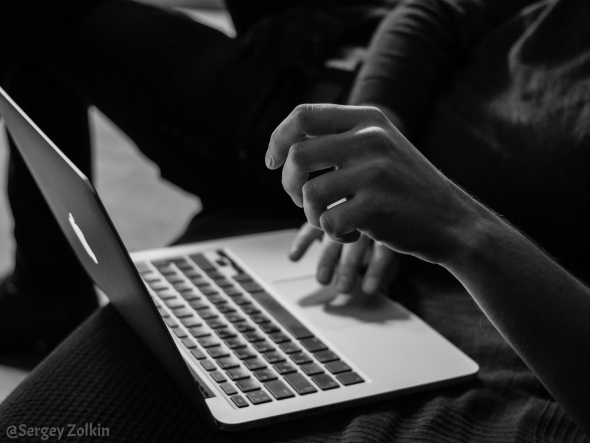
Maybe you’re not interested in working online as a freelancer, or you’re not quite ready to offer design services directly. No problem; there are other platforms where you can still make money from your creative skills, such as drawing, creating vector illustrations, PSD files, patterns, icons, and more. You can even upload photos you’ve taken with your phone.
These platforms typically allow you to create an account, upload your work, and that’s it. You don’t need to worry about client communication, custom orders, or marketing. Your main job is to design and publish. You earn income whenever someone downloads or purchases your design (usually, you get paid a fixed amount per download or sale).
Earlier, we mentioned that you may need to use external design assets for your freelance projects. Often, when you download or buy such assets from these platforms, the original creator earns money. Now, you can be that creator.
These websites generally work in one of two ways: selling your designs and earning royalties from downloads.
Either way, there’s good potential to earn money, especially if your work is high quality and unique, since there’s also competition on these platforms.
Here are some popular design marketplaces:
- Freepik
- Shutterstock
- Adobe Stock
- iStockphoto
- Unsplash
- Flaticon (owned by Freepik)
- Vecteezy
- VectorStock
- Creative Market
- Creative Fabrica
- And many more…
You can choose to publish your work on one platform or across several, as you wish.
Note: Selling a design or photo doesn’t mean it’s sold once and gone; many people can download and purchase the same design, potentially hundreds or even thousands of times. That’s the beauty of these platforms: a single upload can continue to generate passive income for months or even years.
4. Print on demand platforms
This method is similar to the previous one, but here your designs will appear on products such as clothing, accessories, and more. How does that work?
You register or apply to join print-on-demand platforms (as usual, you can work on one or multiple platforms). You fill in the required information, such as your name, date of birth, the name of the store you want to create, payout details, and so on.
Then, you choose a niche, create your designs, and upload them to these platforms. Your designs will appear in your store (which is created automatically and can be customized) or even on the platform’s marketplace. These designs will be displayed on products such as apparel, stickers, cards, wall art, phone and laptop cases, and more, depending on how you configure them.
When someone purchases a product, the platform prints it and ships it to the customer. You earn a profit margin (artist or designer margin). This margin is either set by you or by the print-on-demand platform.
The great thing is that you can make many sales from a single design. You can upload more designs to increase your earning potential or market your work to drive more traffic to your designs. Some of the popular print-on-demand platforms you can work with include:
- Merch by Amazon
- Redbubble
- Teepublic
- Society6
- Zazzle
- Printful or Printify with Amazon, Etsy…
- And many others.
Related: How to Make Money from Teepublic Passive Income Print on Demand.
5. Offering paid courses
You’re skilled in a type of design, aren’t you? You can create an online course where you explain your field and teach design to others. Naturally, those interested in your course can enroll and pay the fee you set (or the platform sets).
There are many platforms where you can sell your courses, such as:
- Udemy
- Coursera
- And others.
Ways to make money from design
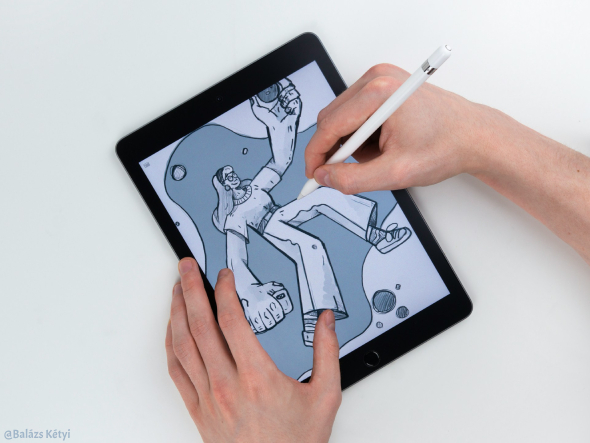
As a professional or even a beginner designer, there are several ways you can benefit from your design skills. When it comes to income opportunities, we actually mentioned many of them earlier in the section “Where Can You Work as a Designer?” But let’s revisit them here, along with some additional options:
- Offering services.
- Selling illustrations, icons, designs, and images.
- Print on demand.
- Creating and selling courses or offering lessons
- Design consulting
- Creating and selling templates (e.g., coded templates)
- … and more
What can you design?
- Various types of designs
- Logos
- Covers
- Advertisements
- Templates
- Videos
- Icons
- Interfaces
- Posters
- Fonts
- Business cards
- And many others
Pros and cons of working as a designer
Like any online job, working as a freelancer or independent designer comes with both advantages and challenges. The same applies to design work specifically.
Pros of working as a designer
1. No fixed workplace required
Working as a freelance designer doesn’t require you to be tied to one specific location. You’re free to choose where you want to work from, whether it’s your office, your room, the kitchen, or even your rooftop, as long as you have a stable internet connection.
You’re not limited to one location. You could start designing in one city and finish in another, even in a different country!
2. Control over working hours
Most of the time, you’re in full control of your work schedule. You can choose when and how long you want to work and stop when you want. You can also set your own working days and hours or display availability on freelance platforms (if supported).
3. Clients from all over the world
This is one of the main reasons freelancing can be very profitable. You can target international markets or focus on specific regions. And if you’re selling your designs on platforms accessible globally, you can receive sales from multiple countries in a short amount of time.
Having access to a global client base means a greater potential for earning more income.
Cons of working as a designer
1. Difficult clients
This is something you might encounter, especially when offering design services. You may come across clients who are hard to please. They’ve paid for your service, so they expect results, but sometimes, even after you deliver the design, they keep requesting changes or communicate rudely.
You might feel frustrated, but at the same time, you don’t want to receive a bad review or harm your reputation on the platform.
2. Competition
Competition is something you’ll face no matter where you go on the internet, and design is no exception. There are people who’ve been doing this for years before you, and others who will start after you and might still outperform you. Sometimes, even if you do your best and use every trick you know, it can be hard to keep up with seasoned professionals or those with a higher skill level.
3. Large storage requirements
The designs you create, along with the fonts, images, and assets you download, can take up a lot of storage space on your device. Over time, this can significantly slow down your computer compared to when it was new.
Related: How to Make Money Drawing Online : 42 Sites.
FAQs
What is Design?
Design is the realization of a concept, idea, or theory into a drawing, model, plan, specification, etc., ultimately allowing the designer or creator to achieve their intended goals. Design is both a process and an art— the process of planning and creating detailed illustrations or layouts. However, there are many definitions of design depending on the context.
How Do I Start in Design?
To start designing, you’ll need some essential tools and resources. Some are necessary, while others are just recommended or nice to have. Here’s what you’ll typically need to get started: a laptop or desktop computer, one or more design programs, and a genuine passion for the field. Additionally, it’s helpful to have basic language skills, access to design resources and platforms, a ruler (for physical design planning), and more.
Can I Make Money from Design?
Yes! Design has become a key part of many industries, especially in the online world. This opens up a wide range of income opportunities. Since there are many types of design, the ways to earn from it vary as well. (You can find a full list of those methods in earlier sections above.)
How Can I Make Money from Design?
To earn from design, start by acquiring the tools we mentioned earlier (like a computer and design software). Then, figure out what type of designs you enjoy creating, such as logos, patterns, icons, etc.
After that, choose how you want to work:
– Do you want to offer your design skills as services to others (creating what they request)?
– Do you prefer selling your own designs on marketplaces?
– Or would you like to have your designs printed on physical products?
Once you decide, explore platforms that fit your path, many of which are listed above.
How Do I Create Designs?
To create designs, you’ll need to use a design platform or software like Photoshop, Illustrator, or others. You’ll also need to learn how to use these tools; you can find plenty of tutorials on YouTube or through online courses.
After that, come up with creative ideas or themes for your designs, and then start creating.
Where Can I Sell My Designs?
If you want to start earning money by selling your designs, you can upload and publish them on stock design and photo platforms such as Freepik, Shutterstock, iStockPhoto, VectorStock, and many others.
If you’d rather sell your designs on physical products, you can do that through print on demand platforms like Redbubble and TeePublic or services like Printful and Printify.
What Are the Fields and Types of Design?
There are many types and categories of design, including graphic design, information design, web design, UI/UX design (user interface and experience), fashion design, video and film editing, multimedia and animation, advertising and marketing design, product packaging, and more.
These areas vary depending on the nature of the work, the tools and software used, and the purpose of the design.
Related: 20 Ways to Make Money Online For Beginners.
Conclusion:
That’s everything in our comprehensive mini-guide on what design is and how to make money from it.
We’ve covered its definition and concept, the tools you need to get started, how and where to earn from it, as well as the pros and cons.
Just to be clear, this isn’t a field where you can slack off or do something simple and expect to build a fortune overnight. It’s real work, a personal project, or a full-time job, depending on your choice.
So, expect that it will take time before you start earning a steady income from your favorite craft.
We hope we haven’t included any incorrect information (though we highly doubt it), and best of luck!


